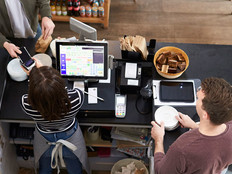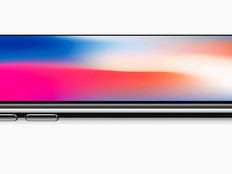IT’s Future Will Be Consumerized – BizTech Quick Take
Take a Class in Consumerized IT
Want to get a glimpse of what the future of enterprise IT will look like? Visit a high school, for starters.
Ken Oestreich, a technology marketer for EMC, points out that the high schools of today are already setting the example for enterprise IT in the future. And that future is one in which users expect high availability, mobile-device freedom and bottomless storage capacity.
It dawned on me: These guys are actually more of a "leading indicator" than most of their commercial enterprise cousins. Their internal customers are nearly all Millennials, arguably leading users of consumer technology, and sometimes the most demanding. The student base requires support for "any device, any time," and doesn't hesitate to use external commercial services rather than IT (think: kids using Dropbox, Evernote, MobileMe, etc.). Also, users (students) without their own personal "smart" devices will typically log into multiple alternative devices a number of times each day, requiring virtual display and authentication technologies.
So, think about it: These students — and their appetite for "consumerized" technologies, will be your workforce of tomorrow.
What that high school IT department is facing is what most IT will be facing during the next few years. So consider carefully who (and what) you'll need to support in the coming years.
Is your organization prepared to handle the IT demands of a high school district? That might be a good benchmark to measure against when future-proofing your networks.
Read Oestreich’s full post on the consumerization of IT on his blog, Fountainhead.
Is It Time to Break Up with the 40-year-old WIMP?
In many ways, touch screens and mobile devices are stealing the show from reliable, mature desktop computing. The windows-icons-mouse-pointer (WIMP) graphical user interface has been a loyal companion for the past four decades, but today many IT workers (and IT companies) are leaning toward mobile OSs and user interfaces. Take Microsoft’s decision to combine its Windows 8 OS with a touch screen/mobile interface alongside its classic WIMP interface, for example.
Chris Curran, a principal at PwC, wonders if the touch screen/mobile OS will be the way all computing is done, regardless of whether it’s on a desktop or mobile device. Signs seem to be pointing in that direction, he notes, especially with many of the multitouch features included the latest version of Apple’s desktop OS, Lion.
Curran offers a few suggestions on ways that enterprises can start experimenting with the mobile paradigms:
It’s not clear to me how much of an impact Lion’s UI changes will have on Apple’s future OS and those from Microsoft. However, given the proliferation of iPads, a surging Microsoft mobile OS, a new Apple iOS announcement and global growth of Android smartphones and tablets, I don’t think we can ignore the changing UI in the enterprise. Many of us are playing catch up on the mobile OS/UI front now, so it could be a good idea to start experimenting with the impacts on the desktop too. Some things you could try are:
- Use an iPad as an extended/second monitor and experiment with finger control for some apps, maybe those with case files or images
- Experiment with an external pen input device for document editing and markup applications
- If you are feeling really adventurous, look into some augmented reality interface prototypes based on the Wii or Micosoft’s Kinect (you will need a little imagination to apply this to your business context)
Read more about the rise of the mobile GUI on Curran’s blog, the CIO Dashboard.
Everything You Need to Know About iOS 5
Apple’s highly anticipated fifth-generation version of its mobile-computing operating system is now officially out in the wild. The latest release of iOS 5 is jampacked with a host of compelling features, including integration with iCloud, the company’s intriguing cloud computing platform.
GottaBeMobile has compiled a list of the top 10 new features:
- Notification Center – In iOS 5, your notifications can be accessed from a slide down window instead of interrupting you all day.
- Newsstand – As apps grow to support it, the Newsstand will collect your newspaper and magazine subscriptions.
- Twitter Integration – Twitter is baked into iOS 5. If you want to share something, tap the Send button, and Tweet will be an option.
- Safari – With the new iOS 5 Safari, you get better performance, a reading list that syncs between devices and tabs on the iPad.
- Reminders – This app will help you keep on top of your full to do list. You can use the iPhone GPS to know where you are — so that you can get reminders at work or at home.
- Better Camera – The new Camera app allows you to use the volume buttons to take pictures, offers faster access to your camera and other improvements.
- New Mail App – Quit digging around for that message. Mail has improved search and new rich text formatting options.
- PC Free – Once you upgrade to iOS 5, you will be able to sync, upgrade and backup without wires.
- Game Center – New Game Center features allow you to add a photo and to play friends of friends.
- iMesssage – The new message app will intelligently send iMessages to other iPhone, iPad and iPod Touch users, so that you don’t have to pay for text messages.
Read more about the latest and greatest in Apple’s iOS 5 on GottaBeMobile.
Internet Browsing Is About to Get Silk(y)
Amazon made a blockbuster announcement in September when it unveiled its first tablet offering, the Amazon Kindle Fire. But along with the impressive new hardware, Amazon also showed off an impressive Internet browser, which the Fire will be utilizing, called Amazon Silk.
The amazing thing about Silk is that it’s a cloud-accelerated Internet browser that uses split architecture. In general terms, this means that the processing is split between the mobile device and the cloud, in this case the Elastic Compute Cloud (EC2) offered by Amazon Web Services.
Rick Blaisdell of CloudTweaks explains how the browser works in more detail:
So what is split architecture? The tasks included in the process of web browsing are split between the tablet and the back end, which is in the cloud. The main systems are on the Kindle Fire, and the additional elements are found remotely on the Amazon Cloud. When clicking a link, the request is being delivered to the cloud, which fetches the elements, optimizes them and loads them to the mobile device. According to Amazon, the cloud functions as a limitless cache where images, CSS, JavaScript are stored for the most common visited pages. This will lead to lighter processing on the tablet.
These back end resources are optimized so that they do not unnecessarily load the mobile device. For example, a picture can have 5 megabytes, but on the tablet it will only load 50 kilobytes, at the same quality. Therefore, you get the maximum of utility and nothing is wasted and you will have more space on your Kindle.
Read more about Amazon’s Silk browser in Blaisdell’s post on CloudTweaks.
SMBs, a Website Alone Is Not Enough
When it comes to Internet marketing, many small and medium-size businesses make the mistake of thinking that merely setting up a website is sufficient. The reality is that a website is a living thing that requires grooming and maintenance — not to mention engagement.
Stephanie Faris, a writer for Smallbiztechnology, highlights five steps that businesses can take to get more out of their websites:
- Promote it, and they will come – Just as you wouldn’t erect a storefront and expect customers to magically find it, you shouldn’t assume they’ll GPS their way to your website, either. Promote your URL on all of your business materials, from your business cards to company letterhead to brochures and publications. Give customers a reason to keep coming back, by constantly updating content and providing interesting, relevant information.
- Capture visitor information – Ask permission, of course, but an email address of a valid, interested, prospective buyer is worth a thousand curious clicks. Use this list responsibly, sending only important updates and specials. Daily spam will only lead a once-potential customer to unsubscribe and forget your company altogether.
- Use social media – Sites like Twitter and Facebook provide valuable marketing venues, when used properly. Create a face to go with your company, making followers feel as if they are interacting with a human being instead of a logo. Create personable, interesting status updates and tweets to keep followers reading and interacting.
- Never forget to network – Create relationships in the industry to help foster a brand reputation. Never underestimate the value of LinkedIn, a social networking site for professionals. Participate in seminars, workshops, and conduct presentations on topics that will generate interest in your business offerings. As always, include your website address in all handouts and presentations.
- Paid advertising – Always an option, paid advertising is most effective when it is targeted to your customers. Be open to a wide variety of media, from traditional print and television ads to website and social media advertising. Where are your customers? Are they reading blogs? Watching daytime TV? Going to the movies? Consider web advertisements on sites that target your ad specifically to the consumers most likely to buy your product.
For more on website marketing for SMBs, read Faris’ post on Smallbiztechnology.
Introduce iPads to Your Business Securely
Using tablets in business seems like a great idea. Restaurants are already experimenting with replacing menus with iPads, for example. Tablets, however, don’t come cheap. And replacing a lost or stolen iPad is certainly far more costly than replacing a paper menu.
The solution? Lock up your mobile device with a Kensington SecureBack case for the iPad. The hardware accessory offers a reasonable and reliable way for businesses to secure their mobile devices, enabling them to invest in mobility without sacrificing security.
Small Biz Go Mobile has the specs and features on the Kensington SecureBack case:
Although there are a lot of high tech solutions that leverage the device’s GPS or camera functionality to cleverly catch the thief, the best solutions for stopping the crime before it starts are hardware solutions. Perfect for the office, the finance industry, heath care, and even exhibitions, Kensington has introduced the new SecureBack case for the iPad 2.
The case has the same ClickSafe Security Anchor that’s used on Kensington’s other popular protective products. The product is great for companies that hand out iPads to their employees and need to prevent the loss of sensitive data and expensive equipment. The cases provide access to all the ports, speakers and buttons, while keeping the device very secure. It does add bulk to the slim profile of the iPad, but this is true for all cases and Kensington has worked to keep the extra weight to a minimum.
Read more about the Kensington SecureBack case on Small Biz Go Mobile.
BYOD: An Appealing Trend that More Businesses Are Embracing
The days of the “company” computer or cell phone might be numbered. As the sophistication of consumer technology has grown by leaps and bounds over the years, enterprise technology increasingly finds itself competing with employee-owned devices. The trend has been dubbed “bring your own device” (BYOD) and it could be a way for IT to focus less on hardware management and more on providing services to the business.
Alan Joch follows the story of a few businesses that are welcoming the shift to worker-owned devices and have put infrastructure and policies in place to support the diverse security and networking needs of these workers across their companies.
Read the story on appeal of BYOD to business in this online article from BizTech.
Find great content from the bloggers listed here and other IT blogs by checking out our 50 Must-Read IT Blogs.






